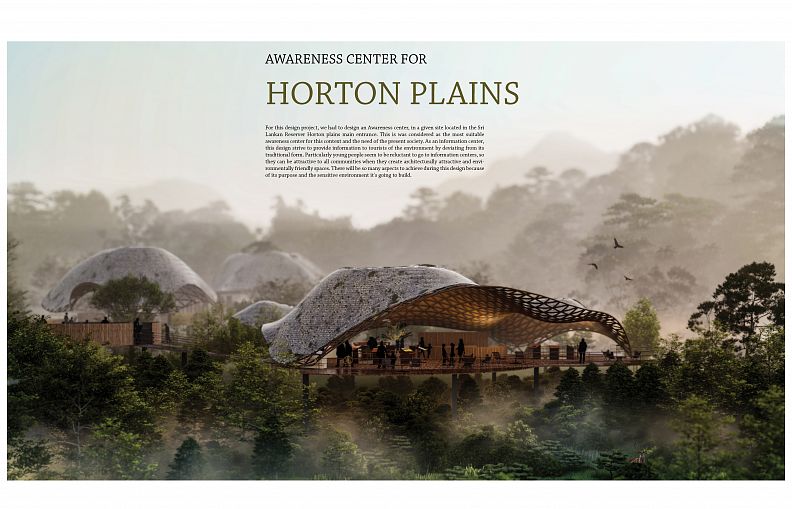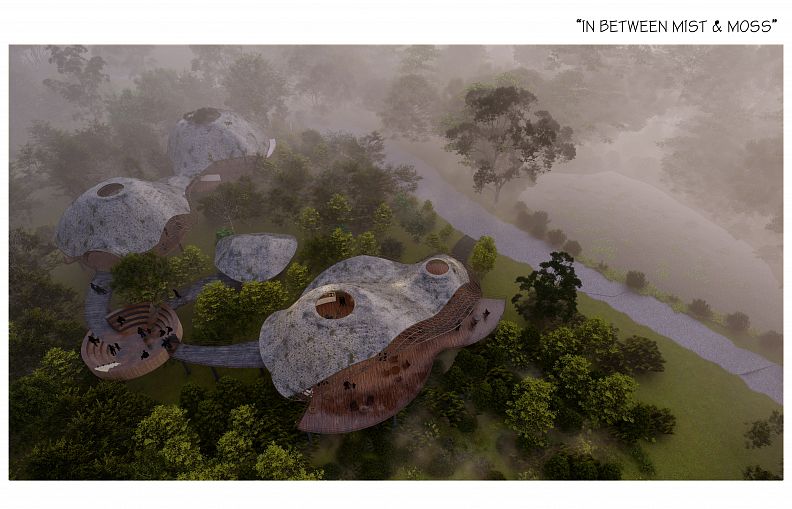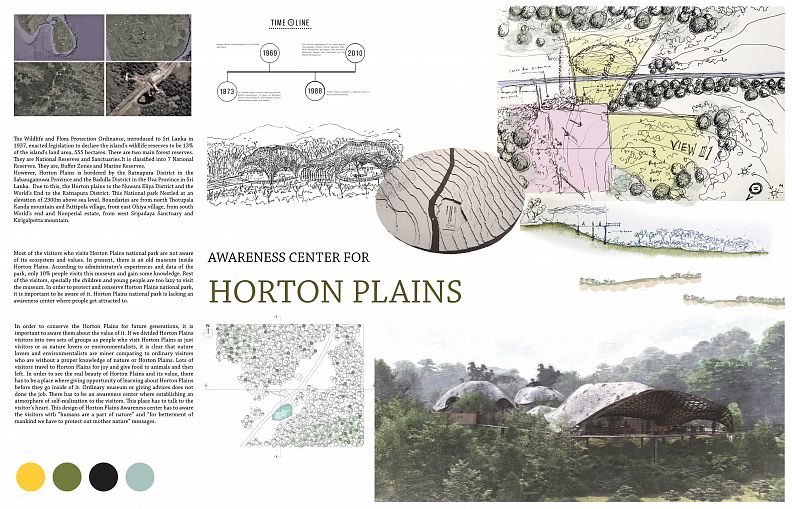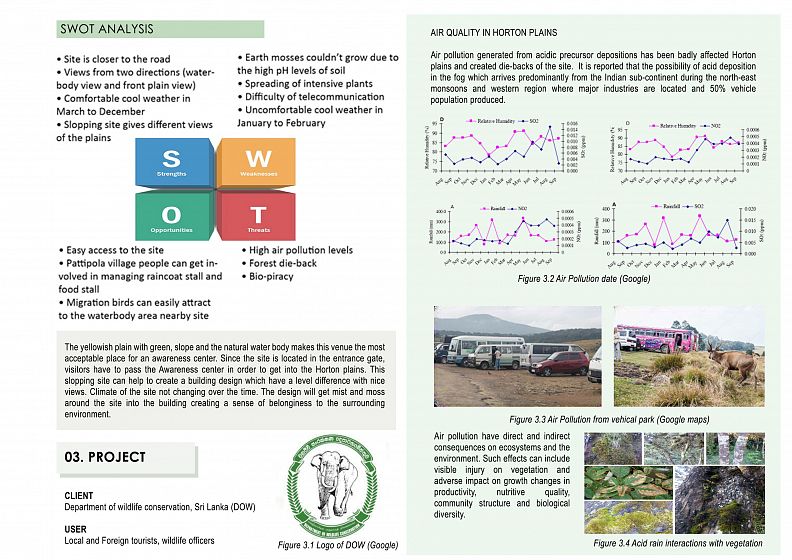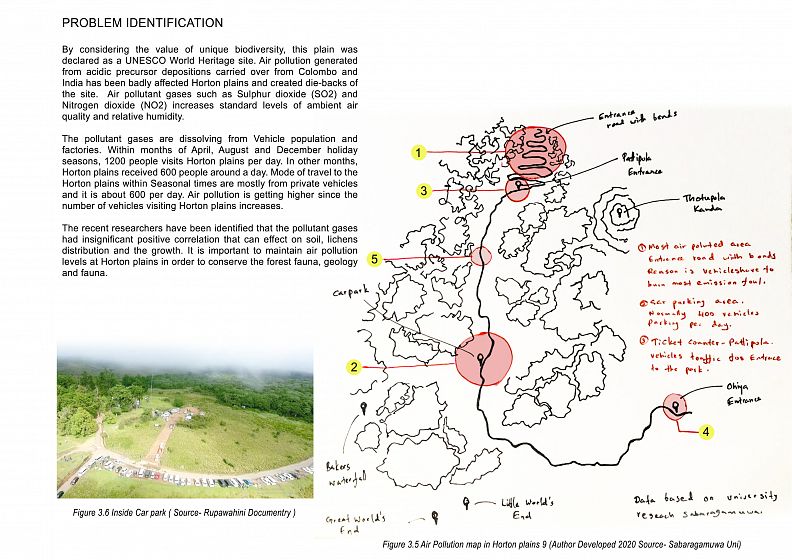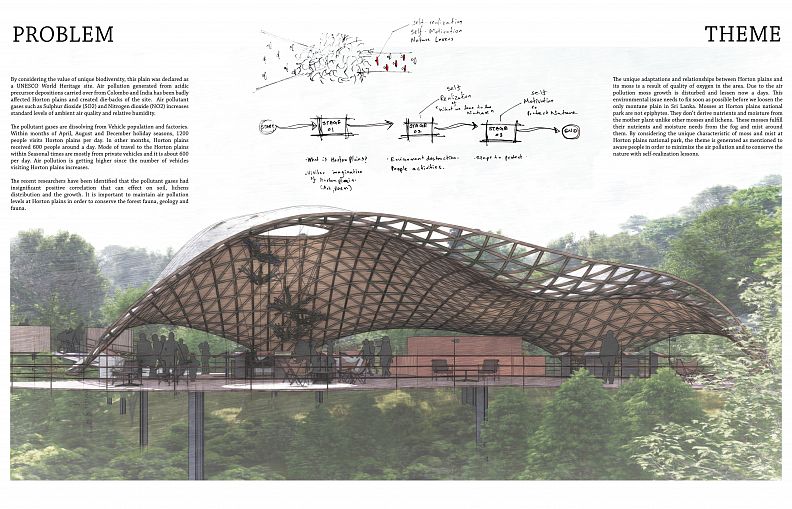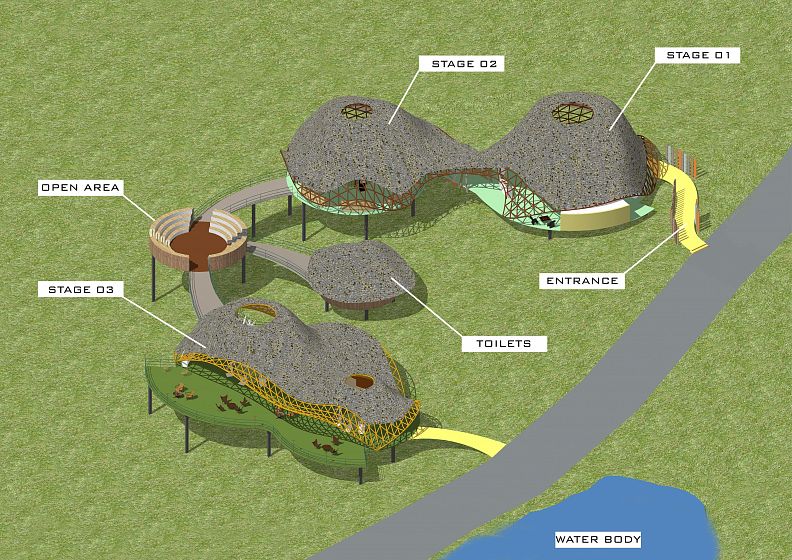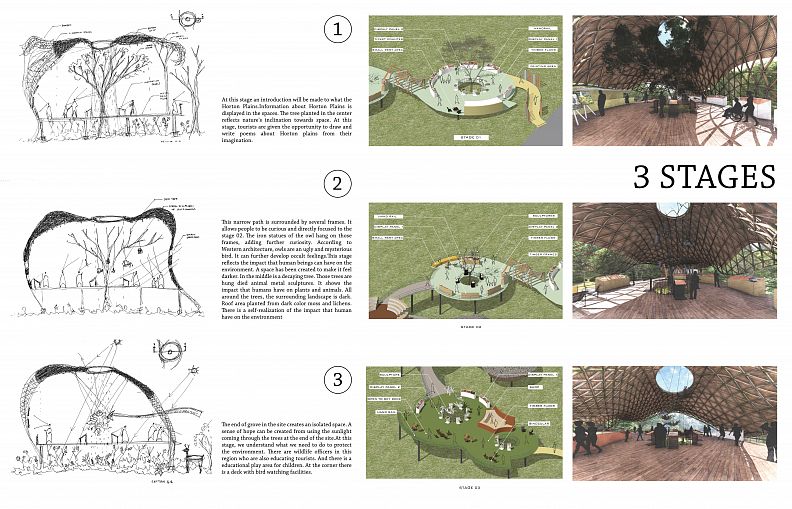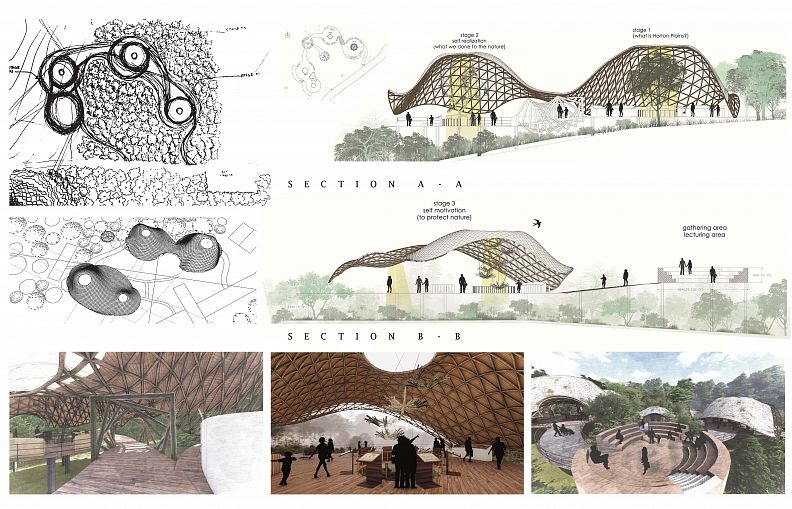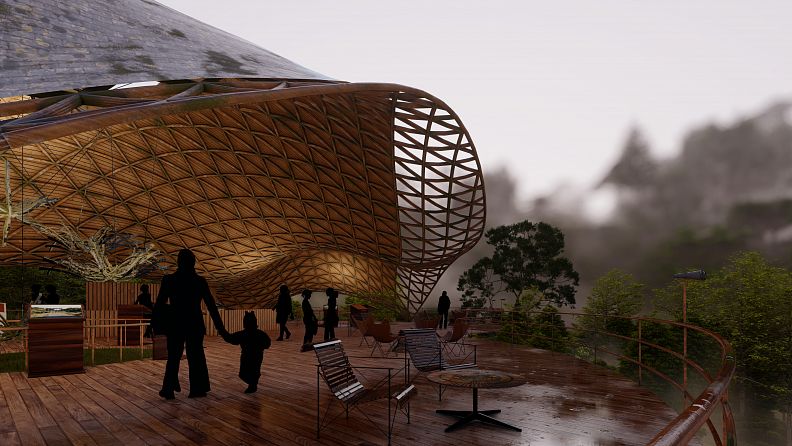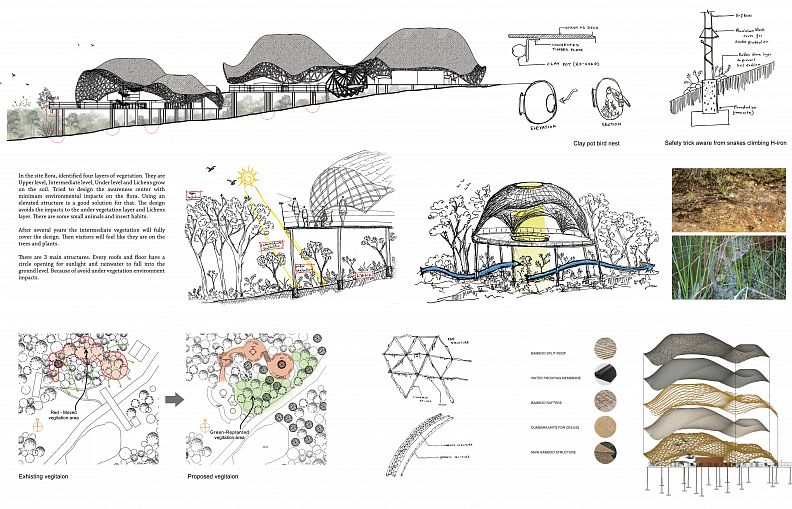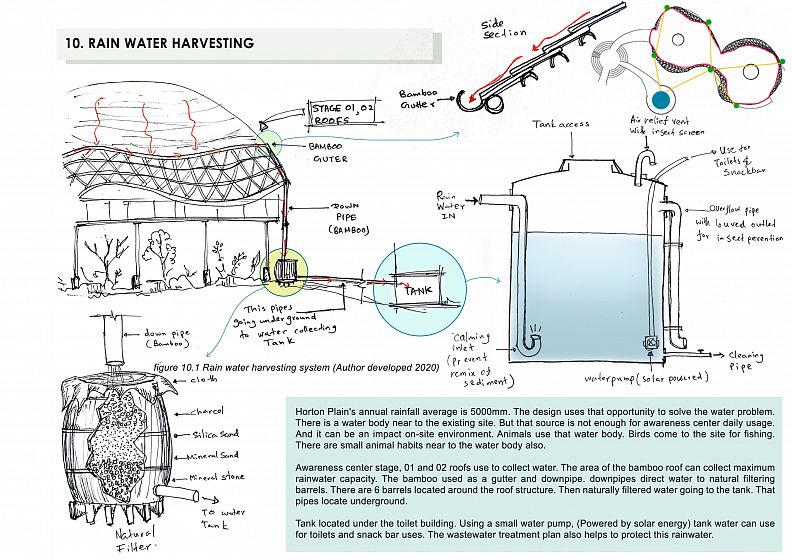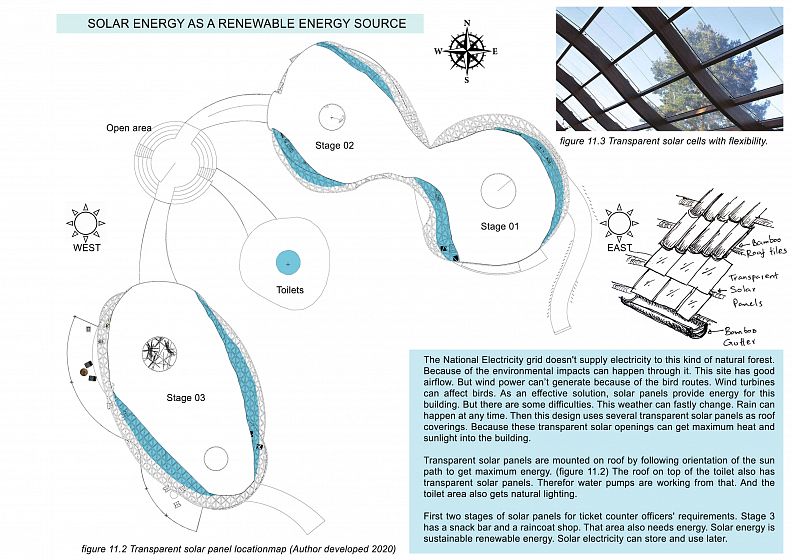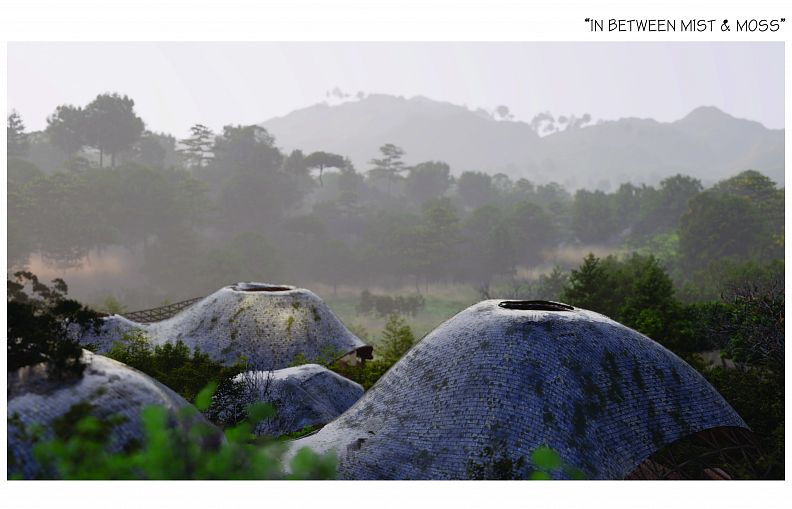In Between Mist and Moss: Horton Plains Awareness Center

Project idea
Project: AWARENESS CENTER FOR HORTON PLAINS
Location: Horton Plains, a UNESCO world heritage site in Sri Lanka
For this design project, we had to design an Awareness center, in a given site located in the Sri Lankan Reserver Horton plains main entrance. This is was considered as the most suitable awareness center for this context and the need of the present society. As an information center, this design strives to provide information to tourists about the environment by deviating from its traditional form. Particularly young people seem to be reluctant to go to information centers to be attractive to all communities when they create architecturally attractive and environmentally friendly spaces. There will be so many aspects to achieve during this design because of its purpose and the sensitive environment it's going to build.
The Wildlife and Flora Protection Ordinance, introduced to Sri Lanka in 1937, enacted legislation to declare the island's wildlife reserves to be 13% of the island's land area, 555 hectares. There are two main forest reserves. They are National Reserves and Sanctuaries. It is classified into 7 National Reserves. They are Buffer Zones and Marine Reserves.
However, Horton Plains is bordered by the Ratnapura District in the Sabaragamuwa Province and the Badulla District in the Uva Province in Sri Lanka. Due to this, the Horton Plains to the Nuwara Eliya District and the World’s End to the Ratnapura District. This National park is Nestled at an elevation of 2300m above sea level. Boundaries are from north Thotupala Kanda mountain and Pattipola village, from east Ohiya village, from south World’s end and Nonperial estate, west Sripadaya Sanctuary Kirigalpotta mountain.
Most of the visitors who visit Horton Plains national park are not aware of its ecosystem and values. At present, there is an old museum inside Horton Plains. According to the administrator’s experiences and data of the park, only 10% of people visit this museum and gain some knowledge. The rest of the visitors, especially the children and young people are too lazy to visit the museum. To protect and conserve Horton Plains national park, it is important to be aware of it. Horton Plains national park is lacking an awareness center where people get attracted to.
To conserve the Horton Plains for future generations, it is important to know them about its value. If we divided Horton Plains visitors into two sets of groups as people who visit Horton Plains as just visitors or as nature lovers or environmentalists, it is clear that nature lovers and environmentalists are miner comparing to ordinary visitors who are without proper knowledge of nature or Horton Plains. Lots of visitors travel to Horton Plains for joy and give food to animals and then left. To see the real beauty of Horton Plains and its value, there has to be a place where giving the opportunity of learning about Horton Plains before they go inside of it. Ordinary museums or giving advice does not do the job. There has to be an awareness center whare establishing an atmosphere of self-realization to the visitors. This place has to talk to the visitor’s heart. This design of Horton Plains Awareness center has to aware the visitors with “humans are a part of nature” and “for the betterment of mankind, we have to protect our mother nature” messages.
Project description
PROBLEM
By considering the value of unique biodiversity, this plain was declared as a UNESCO World Heritage site. Air pollution generated from acidic precursor depositions carried over from Colombo and India has been badly affected Horton plains and created die-backs of the site. Air pollutant gases such as Sulphur dioxide (SO2) and Nitrogen dioxide (NO2) increases standard levels of ambient air quality and relative humidity.
The pollutant gases are dissolving from Vehicle population and factories. Within months of the April, August, and December holiday seasons, 1200 people visit Horton plains per day. In other months, Horton plains received 600 people around a day. Mode of travel to the Horton plains within Seasonal times are mostly from private vehicles and it is about 600 per day. Air pollution is getting higher since the number of vehicles visiting Horton plains increases.
Recent researchers have been identified that the pollutant gases had insignificant positive correlation that can affect soil, lichens distribution, and growth. It is important to maintain air pollution levels at Horton plains to conserve the forest fauna, geology, and fauna.
THEME
The unique adaptations and relationships between Horton plains and its moss are a result of the quality of oxygen in the area. Due to the air pollution, moss growth is disturbed and lessen nowadays. This environmental issue needs to fix soon as possible before we loosen the only montane plain in Sri Lanka. Mosses at Horton plains national park are not epiphytes. They don’t derive nutrients and moisture from the mother plant, unlike other mosses and lichens. These mosses fulfill their nutrients and moisture needs from the fog and mist around them. By considering the unique characteristic of moss and mist at Horton plains national park, the theme is generated as mentioned to aware people to minimize air pollution and conserve nature with self-realization lessons.
Environmental air quality can be measured with the “Moss”. This biofilter grows on the branches and trunks of trees without harming the trees. Mosses have interaction with both trees and shrubs. Mosses provide early warnings of air pollution in a particular area.
When the fog is formed and flowing over the cloudy forest, mosses and lichens are absorbing the water droplets in it. These small water droplets which are falling to earth are beneficial to both trees and tributary areas in Horton plains. And it is creating cool weather.
This awareness center design is focusing on producing a considerable number of environmentalists who love nature and are in an intention of protecting nature. Since moss creates no harm to nature and is a sustainable biofilter in nature, it is the inspiration behind the building. As “mist” and fog flowing through mosses, people will gather in this awareness center. The whole idea is formed by observing the process of moss absorbing water droplets from the fog and leave it to the earth for its nourishment.
BIODIVERSITY RESPONDING
The design has used the natural vegetation area to cover the wide views. Because In the main first two stages it direct visitors’ focus only for building inside. They can feel the building inside the interior and focus on the information panels.
For the sake of the building allocation, in the design vegetation area, I had to reallocate some using the technology to replace trees from the original place to another place. Also, I replant some trees in front of the site to cover the building. When people see the top of the structure blend with nature, they are attracted to visit inside of the Awareness Center.
Finally, visitors direct to this stage 03 and give them wide views which surprises them. visitors will be Self-Motivated to protect nature. The interior and the information panels lead them to that as supportive elements.
Technical information
STAGE 01
At this stage, an introduction will be made to Horton Plains. Information about Horton Plains is displayed in the spaces. The tree planted in the center reflects nature's inclination towards space. At this stage, tourists are allowed to draw and write poems about Horton plains from their imagination.
STAGE 02
This narrow path is surrounded by several frames. It allows people to be curious and directly focused to stage 02. The iron statues of the owl hang on those frames, adding further curiosity. According to Western architecture, owls are ugly and mysterious birds. It can further develop occult feelings. This stage reflects the impact that human beings can have on the environment. Space has been created to make it feel darker. In the middle is a decaying tree. Those trees are hung dead animal metal sculptures. It shows the impact that humans have on plants and animals. All around the trees, the surrounding landscape is dark. Roof area planted from dark color moss and lichens. There is a self-realization of the impact that humans have on the environment
STAGE 03
The end of the grove in the site creates an isolated space. A sense of hope can be created by using the sunlight coming through the trees at the end of the site. At this stage, we understand what we need to do to protect the environment. There are wildlife officers in this region who are also educating tourists. And there is an educational play area for children. At the corner, there is a deck with bird-watching facilities.
In the site flora, identified four layers of vegetation. They are Upper level, Intermediate level, Under level and Lichens grow on the soil. Tried to design the awareness center with minimum environmental impacts on the flora. Using an elevated structure is a good solution for that. The design avoids the impacts to the under vegetation layer and Lichens layer. There are some small animals and insect habits.
After several years the intermediate vegetation will fully cover the design. Then visitors will feel like they are on the trees and plants.
There are 3 main structures. Every roofs and floor have a circle opening for sunlight and rainwater to fall into the ground level. Because of avoiding under vegetation environment impacts.
